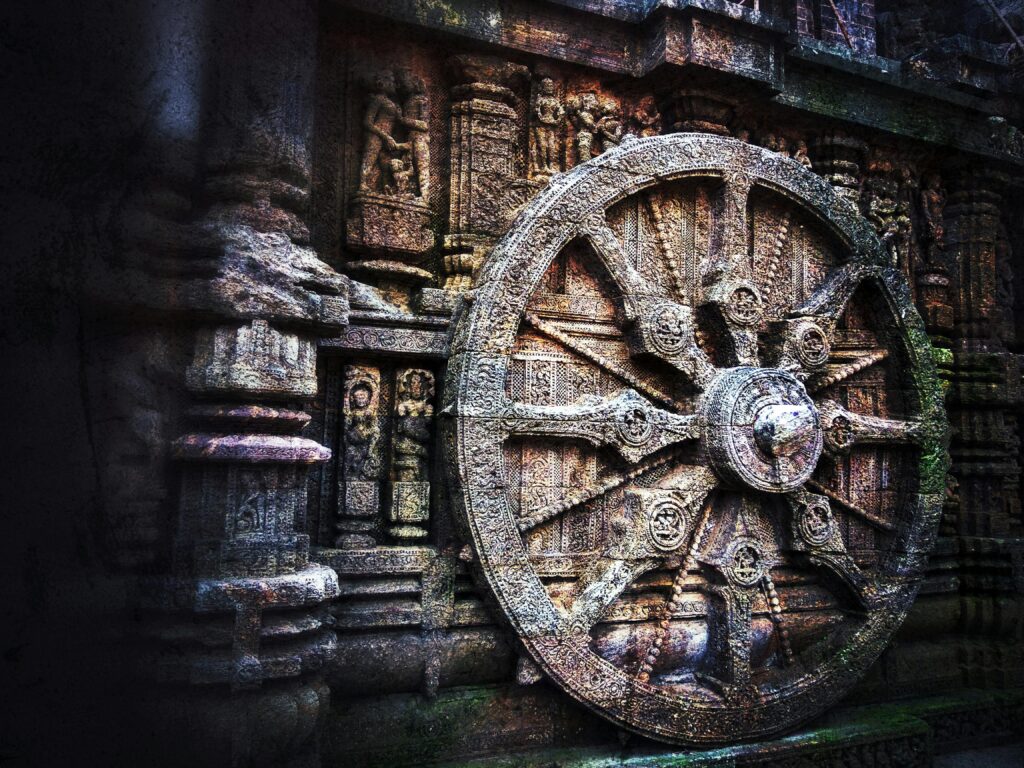
Hindu temple tours India
India, often referred to as the land of spirituality and diversity, is home to an exquisite array of religious practices and beliefs. Among its many spiritual treasures, Hindu temples stand out as magnificent monuments of art, culture, and devotion. They are not just places of worship but also centers of community life and custodians of ancient traditions. In this article, we explore the significance of Hindu temple tours in India, their architectural grandeur, cultural importance, and the experiences they offer to visitors.
1. Significance of Hindu Temples
Hindu temples are essential to the spiritual landscape of India. They symbolically represent the cosmos and act as a bridge between the earthly realm and the divine. Every aspect of Hindu temple architecture is imbued with spiritual significance:
- The Mandir Structure: The temple typically consists of several key components, including the sanctum sanctorum (garbhagriha), where the main deity resides, and the shikhara or vimana, which towers above the sanctum. The layout is designed to reflect the Hindu cosmology and the belief in the sacredness of space.
- Deities and Icons: Temples are dedicated to various deities, each representing different aspects of life and existence. Common deities include Brahma, Vishnu, Shiva, and various goddesses like Lakshmi and Durga. The intricately designed idols often reflect the rich mythology associated with each deity and serve as focal points for devotees.

2. Architectural Styles
India’s vast geography has led to a variety of architectural styles in temple construction. Each region boasts distinct features that reflect local traditions and cultures. Here are some notable styles:
- Nagara Style: Predominantly seen in North India, this style is characterized by beehive-shaped shikharas. Notable examples include the temples of Khajuraho and the famous Sun Temple in Konark.
- Dravidian Style: Found mainly in South India, Dravidian architecture features towering gopurams (gateway towers) and intricate stone carvings. The Brihadeeswarar Temple in Thanjavur is a prime example of this style.
- Vesara Style: A fusion of Nagara and Dravidian styles, this style can be observed in temples in Karnataka, such as the Hoysaleswara Temple in Halebid.
- Influences of Other Cultures: Some temples display influences from ancient Buddhist and Jain architecture, showcasing India’s syncretic traditions.
3. Popular Hindu Temple Tour Destinations
Embarking on a Hindu temple tour in India offers a unique opportunity to explore the rich heritage and spirituality of the nation. Here are some famous destinations that every traveler should consider:
- Varanasi: One of the oldest inhabited cities in the world, Varanasi is revered as a spiritual epicenter. The Kashi Vishwanath Temple, dedicated to Lord Shiva, is a must-visit, and the ghats along the Ganges River offer a glimpse of ancient rituals and ceremonies.
- Rishikesh and Haridwar: Both cities are located along the banks of the Ganges River. Rishikesh is known for its yoga and meditation centers, while Haridwar hosts the iconic Har Ki Pauri ghat and several ancient temples, including the Mansa Devi Temple.
- Tirupati: Home to the Tirumala Venkateswara Temple, this is one of the wealthiest temples in the world and attracts millions of pilgrims annually. The temple’s architecture, rituals, and the scenic surroundings make it a significant pilgrimage site.
- Ajmer Sharif Dargah: While primarily a shrine for Muslim devotees, the Ajmer Sharif Dargah, dedicated to the Sufi saint Khwaja Moinuddin Chishti, is frequented by Hindu pilgrims as well, showcasing India’s communal harmony.
- Khajuraho: Famous for its stunning temples adorned with erotic sculptures, the Khajuraho group of monuments is a UNESCO World Heritage Site that illustrates the artistic heritage of medieval India.

4. Spiritual Experiences and Festivals
Visiting Hindu temples offers more than just architectural beauty; it provides a profound spiritual experience. Different temples host various rituals, festivals, and events throughout the year, allowing visitors to witness the rich tapestry of Hindu culture:
- Aarti: A ceremonial worship service performed with the singing of hymns and the lighting of lamps. Attending aarti at temples, especially in places like Varanasi, can be a truly uplifting experience.
- Festivals: Temples come alive during festivals such as Diwali, Navaratri, and Holi. Visitors can partake in colorful celebrations, witness traditional dances, and enjoy the festive spirit that envelops the temple premises.
- Puja Rituals: Many temples offer visitors the chance to participate in puja (worship) ceremonies, helping them connect more deeply with the traditions and rituals of Hinduism.
5. Planning a Temple Tour in India
For those looking to explore Hindu temples in India, careful planning can enhance the experience:
- Best Time to Visit: The ideal time for temple tours is during the cooler months, from October to March. This period coincides with several major festivals, making it a vibrant time to visit.
- Guided Tours versus Solo Exploration: While guided tours can provide valuable insights and cultural context, exploring temples on your own can lead to personal discoveries. Hiring local guides can strike a balance for a richer experience.
- Respecting Traditions: Visitors should be aware of the customs and traditions associated with each temple. Dress modestly, remove shoes before entering sanctums, and observe local norms when participating in rituals.
- Accessibility: Many prominent temples are well-connected by public transport, but some may require additional travel. It is wise to check accessibility options and plan logistics accordingly.
6. The Impact of Temple Tours on Cultural Preservation
Hindu temple tours have a significant impact on the preservation of India’s rich cultural heritage. By attracting millions of visitors, both domestic and international, these tours contribute to the local economy and encourage the protection of temples. Additionally, they foster intercultural understanding and promote awareness of India’s spiritual traditions.
Conclusion
A Hindu temple tour in India is a journey of spiritual discovery, architectural appreciation, and cultural immersion. Each temple, with its unique stories and traditions, invites visitors to explore the profound depth of Hindu spirituality. As travelers wander through intricate carvings, participate in sacred rituals, and engage with the vibrant festivities, they gain a deeper understanding of India’s rich heritage. Whether seeking spiritual solace or simply the beauty of ancient artistry, Hindu temples are an integral part of the Indian experience, leaving an indelible mark on all who visit. Embracing the spiritual essence that these temples embody is not only a journey through history but also an exploration of the self, making Hindu temple tours an unforgettable chapter in the adventure of discovering India.
Lorem ipsum dolor sit amet, consectetur adipiscing elit. Ut elit tellus, luctus nec ullamcorper mattis, pulvinar dapibus leo.






























